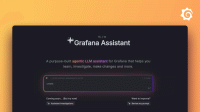This is documentation for the next version of Grafana Alloy Documentation. For the latest stable release, go to the latest version.
discovery.azure
discovery.azure discovers Azure Virtual Machines and exposes them as targets.
Usage
discovery.azure "<LABEL>" {
}Arguments
You can use the following arguments with discovery.azure:
no_proxy can contain IPs, CIDR notations, and domain names. IP and domain names can contain port numbers.
proxy_url must be configured if no_proxy is configured.
proxy_from_environment uses the environment variables HTTP_PROXY, HTTPS_PROXY, and NO_PROXY (or the lowercase versions thereof).
Requests use the proxy from the environment variable matching their scheme, unless excluded by NO_PROXY.
proxy_url and no_proxy must not be configured if proxy_from_environment is configured.
proxy_connect_header should only be configured if proxy_url or proxy_from_environment are configured.
Blocks
You can use the following blocks with discovery.azure:
You must specify exactly one of the oauth or managed_identity blocks.
managed_identity
The managed_identity block configures Managed Identity authentication for the Azure API.
oauth
The oauth block configures OAuth 2.0 authentication for the Azure API.
tls_config
The tls_config block configures TLS settings for requests to the Azure API.
The following pairs of arguments are mutually exclusive and can’t both be set simultaneously:
ca_pemandca_filecert_pemandcert_filekey_pemandkey_file
When configuring client authentication, both the client certificate (using cert_pem or cert_file) and the client key (using key_pem or key_file) must be provided.
When min_version isn’t provided, the minimum acceptable TLS version is inherited from Go’s default minimum version, TLS 1.2.
If min_version is provided, it must be set to one of the following strings:
"TLS10"(TLS 1.0)"TLS11"(TLS 1.1)"TLS12"(TLS 1.2)"TLS13"(TLS 1.3)
Exported fields
The following fields are exported and can be referenced by other components:
Each target includes the following labels:
__meta_azure_machine_computer_name: The host OS name of the VM.__meta_azure_machine_id: The UUID of the Azure VM.__meta_azure_machine_location: The region the VM is in.__meta_azure_machine_name: The name of the VM.__meta_azure_machine_os_type: The OS the VM is running, eitherLinuxorWindows.__meta_azure_machine_private_ip: The private IP address of the VM.__meta_azure_machine_public_ip: The public IP address of the VM.__meta_azure_machine_resource_group: The name of the resource group the VM is in.__meta_azure_machine_scale_set: The name of the scale set the VM is in.__meta_azure_machine_size: The size of the VM.__meta_azure_machine_tag_*: A tag on the VM. There is one label per tag.__meta_azure_subscription_id: The Azure subscription ID.__meta_azure_tenant_id: The Azure tenant ID.
Each discovered VM maps to a single target.
The __address__ label is set to the private_ip:port of the VM if the private IP is an IPv4 address, or [private_ip]:port if the private IP of the VM is an IPv6 address.
Component health
discovery.azure is only reported as unhealthy when given an invalid configuration.
In those cases, exported fields retain their last healthy values.
Debug information
discovery.azure doesn’t expose any component-specific debug information.
Debug metrics
discovery.azure doesn’t expose any component-specific debug metrics.
Example
discovery.azure "example" {
port = 80
subscription_id = "<AZURE_SUBSCRIPTION_ID>"
oauth {
client_id = "<AZURE_CLIENT_ID>"
client_secret = "<AZURE_CLIENT_SECRET>"
tenant_id = "<AZURE_TENANT_ID>"
}
}
prometheus.scrape "demo" {
targets = discovery.azure.example.targets
forward_to = [prometheus.remote_write.demo.receiver]
}
prometheus.remote_write "demo" {
endpoint {
url = "<PROMETHEUS_REMOTE_WRITE_URL>"
basic_auth {
username = "<USERNAME>"
password = "<PASSWORD>"
}
}
}Replace the following:
<AZURE_SUBSCRIPTION_ID>: Your Azure subscription ID.<AZURE_CLIENT_ID>: Your Azure client ID.<AZURE_CLIENT_SECRET>: Your Azure client secret.<AZURE_TENANT_ID>: Your Azure tenant ID.<PROMETHEUS_REMOTE_WRITE_URL>: The URL of the Prometheus remote_write-compatible server to send metrics to.<USERNAME>: The username to use for authentication to theremote_writeAPI.<PASSWORD>: The password to use for authentication to theremote_writeAPI.
Compatible components
discovery.azure has exports that can be consumed by the following components:
- Components that consume Targets
Note
Connecting some components may not be sensible or components may require further configuration to make the connection work correctly. Refer to the linked documentation for more details.



